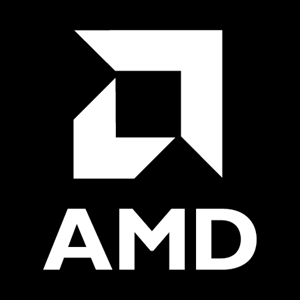Advanced Micro Devices (AMD), founded in 1969, has grown to become one of the leading innovators in the semiconductor industry. Renowned for its cutting-edge CPUs, GPUs, and adaptive computing technologies, AMD consistently challenges industry giants like Intel and NVIDIA. Over the decades, the company has strategically leveraged mergers and acquisitions to enhance its technological prowess, diversify its product portfolio, and position itself as a formidable competitor in high-performance computing, gaming, and data center markets.
Key Historical Acquisitions
Below are some of AMD’s most impactful acquisitions over the years:
- NexGen (1996)
-
- Value: $857 million in AMD shares
- Overview: Acquiring NexGen enabled AMD to advance its CPU designs, which eventually led to the development of the K6 processor line, a crucial milestone in AMD’s history.
- ATI Technologies (2006)
-
- Value: $5.4 billion
- Overview: This acquisition marked AMD’s entry into the graphics market, allowing it to directly compete with NVIDIA. It led to innovations such as Accelerated Processing Units (APUs).
- Alchemy Semiconductor (2002)
-
- Value: Undisclosed
- Overview: AMD expanded into the embedded RISC processor market with this acquisition, diversifying its processor offerings.
- SeaMicro (2012)
-
- Value: $334 million
- Overview: This acquisition bolstered AMD’s data center presence, introducing energy-efficient server technologies.
- Xilinx (2022)
-
- Value: $49 billion
- Overview: Acquiring Xilinx brought AMD into adaptive computing, leveraging Field Programmable Gate Arrays (FPGAs) to serve industries like automotive, healthcare, and aerospace.
- Pensando (2022)
-
- Value: $1.9 billion
- Overview: This acquisition enriched AMD’s data center offerings with advanced networking and security capabilities.
- Mipsology (2023)
-
- Value: Undisclosed
- Overview: AMD acquired this AI inference software firm to strengthen its AI solutions for enterprises.
- Nod.ai (2023)
-
- Value: Undisclosed
- Overview: Nod.ai enhanced AMD’s open-source AI ecosystem, simplifying AI deployment on AMD hardware.
Recent Activities (2024-2025)
In 2024, AMD announced its intention to acquire ZT Systems for $4.9 billion. This strategic move aims to enhance AMD’s AI infrastructure capabilities, enabling rapid deployment of AI solutions at scale for cloud and enterprise customers. The transaction is expected to close in the first half of 2025, subject to regulatory approvals.
Additionally, in July 2024, AMD completed the acquisition of Silo AI for $665 million. This acquisition is set to augment AMD’s AI model development, particularly in creating multilingual large language models optimized for AMD platforms.
Strategic Decisions and Their Impact
- Diversification into Graphics Processing: The acquisition of ATI Technologies allowed AMD to offer integrated CPU-GPU solutions, catering to the growing demand for high-performance graphics in computing.
- Expansion into Adaptive Computing: Acquiring Xilinx provided AMD with a foothold in the FPGA market, enabling the company to offer customizable solutions across various industries.
- Strengthening Data Center Capabilities: The acquisitions of SeaMicro, Pensando, and ZT Systems reflect AMD’s commitment to enhancing its data center offerings, focusing on energy efficiency, advanced networking, and AI infrastructure.
- Advancement in AI Technologies: Through the acquisitions of Mipsology, Nod.ai, and Silo AI, AMD has bolstered its AI software and model development capabilities, positioning itself as a competitive player in the AI sector.
Through these acquisitions, AMD has consistently adapted to market trends, ensuring its leadership in the tech industry.
Successes and Challenges
- Successes: The acquisitions of ATI Technologies and Xilinx have been particularly successful, allowing AMD to diversify its product offerings and enter new markets. These strategic moves have positioned AMD as a formidable competitor in both graphics processing and adaptive computing sectors.
- Challenges: The integration of ATI Technologies presented initial challenges due to cultural differences and operational integration issues. However, over time, AMD successfully unified its operations, leading to innovative products like the APU.
Overall, AMD’s strategic acquisitions have played a crucial role in its growth and competitiveness, enabling the company to adapt to industry trends and meet evolving customer demands.

